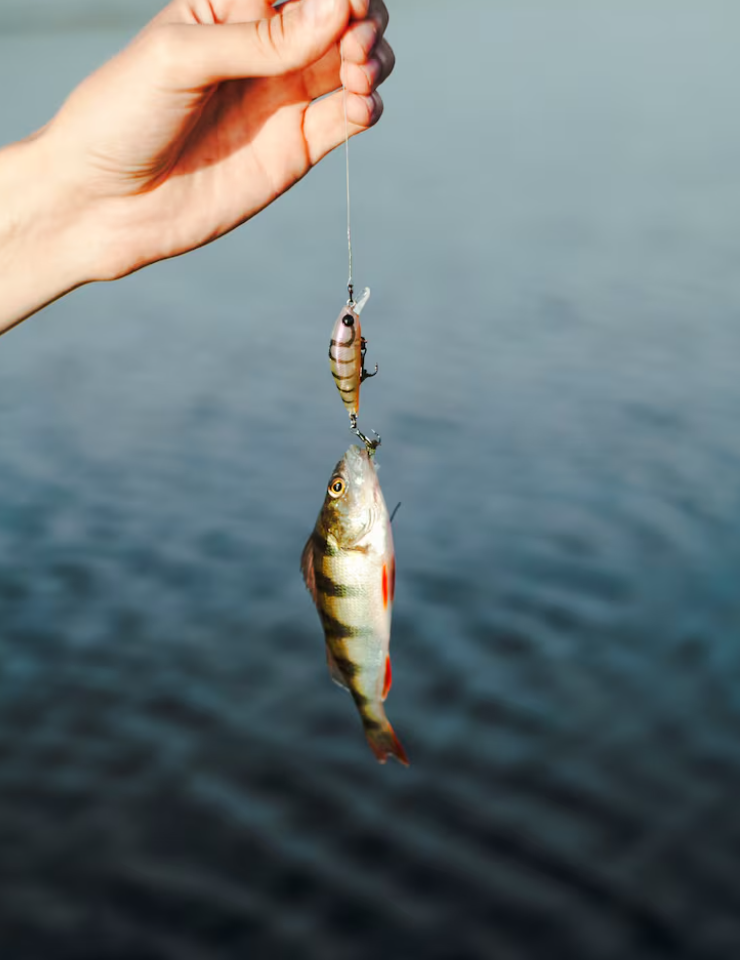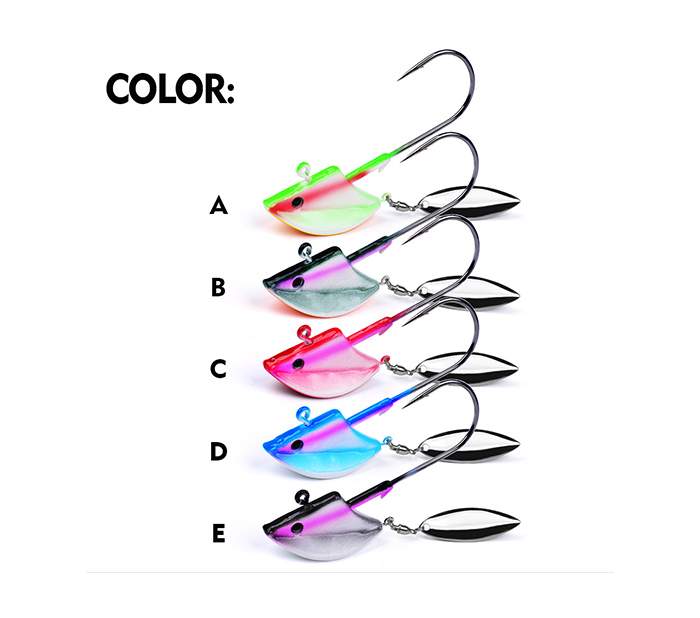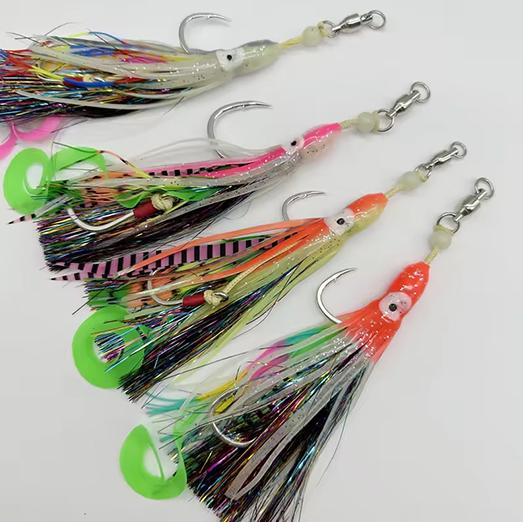Live bait fishing hooks fish like nothing else—those wriggling worms or darting minnows are hard for predators to resist. But hook them wrong, and they die fast or slip off, leaving you with an empty line and a long day. This guide walks you through the best ways to hook live bait, tailored to different types and fishing scenarios. With over a decade of crafting top-notch gear, Laike knows what works on the water. Based in Tianjin with a factory in Weihai, China, they produce rods, reels, and accessories exported to over 20 countries like the US, Canada, and Japan. Their one-stop shop handles small orders or bulk with delivery in as little as three days.

What Types of Live Bait Are Most Common?
Different live baits attract different fish, and each needs a specific hooking method to stay lively. Knowing what’s popular helps you pick the right approach for your target.
Worms and Leeches
Nightcrawlers or red worms are staples for freshwater fish like bass or panfish. Leeches, tough and slimy, draw walleye or pike. Thread worms through the collar or tail to keep them squirming naturally. Leeches work best hooked lightly through the sucker end, letting them twist in the water. A small 5 colors jig head hook, weighing 3-7g, secures worms without killing their action.
Minnows and Small Fish
Minnows, shiners, or small baitfish tempt predators like trout, bass, or stripers. Their lively swimming grabs attention, but they’re delicate. Hook them to mimic natural movement—lip, back, or tail methods work depending on your setup. Use a 10g octopus squid skirts jig for bigger baitfish in saltwater, as its high-carbon steel hook holds firm.
Shrimp and Crustaceans
Live shrimp are gold for inshore species like redfish or snook. They kick and flutter, driving fish wild. Hook them carefully to keep them alive—through the tail or head works best. Crayfish, popular for bass, need sturdy hooks like the octopus squid skirts jig to handle their tough shells and active claws.
How Should You Hook a Worm?
Worms are versatile, but hooking them wrong makes them ball up or die. Different methods suit different fishing styles, so pick based on your setup.
Collar Hooking
Thread a worm onto a 3g jig head hook just below the head, or collar, letting the rest dangle. This keeps it wriggling naturally, perfect for bass in murky water. Slide the hook through once or twice, avoiding deep stabs. The light weight of the jig head ensures the worm sinks slowly, tempting bites.
Tail Hooking
Hook through the worm’s tail end, leaving most of the body free. This works in clear streams for trout, as the worm stretches out in the current. Use a small 5g jig head hook to avoid overloading. Single hooks reduce snags in grassy areas, keeping the worm lively.
Wacky Rigging
Pierce the worm through the middle with a 3-7g jig head hook, letting both ends flop. This creates a twitching fall that panfish love in still lakes. The hook’s sharp point ensures a quick set, and the five color options add flash to draw attention.
How Should You Hook a Minnow?
Minnows need careful hooking to swim naturally without dying. Each method targets specific fish behaviors, so match it to your goal.
Lip Hooking
Run a 5-7g jig head hook through both lips, from bottom to top. This keeps minnows swimming forward, ideal for trolling or casting to bass. It’s secure but can tire the bait faster. The hook’s high-carbon steel bites deep into fish jaws when they strike.
Dorsal Fin Hooking
Hook just under the dorsal fin, avoiding the spine, with a 10g octopus squid skirts jig. This lets minnows swim naturally, great for drifting in rivers for trout. The skirt’s lifelike action mimics a struggling fish, boosting attraction without harming the bait’s movement.
Tail Hooking
Pierce through the tail, above the anal fin, with a light jig head hook. This works for bottom fishing, letting the minnow struggle upward, tempting walleye or catfish. The hook’s lead weight helps it sink to the strike zone while keeping the bait active.
How Should You Hook Shrimp?
Shrimp are delicate but deadly for inshore fishing. Hook them to maximize kick and avoid killing them, or fish ignore the bait.
Tail Hooking
Thread a 10g octopus squid skirts jig through the tail, just above the fan, avoiding the dark gut spot. This keeps shrimp kicking hard, perfect for redfish in shallow flats. The skirt’s glow and movement add extra appeal in murky water, drawing strikes from afar.
Head Hooking
Pierce behind the eyes, through the horn, with a 5g jig head hook. This secures shrimp for casting to snook under mangroves. It keeps them alive longer but limits tail movement. Use in clear water where fish target the head first.
Side Hooking
Hook through the side of the shrimp’s body, near the tail, with an octopus jig. This allows free swimming, ideal for drifting over seagrass for speckled trout. The high-carbon steel hook ensures a solid set, and the skirt mimics natural prey movement.
What Gear Enhances Live Bait Fishing?
Good hooks and tackle make all the difference. Laike’s high-quality gear keeps bait secure and fish hooked, so don’t skimp on the essentials.
Sharp and Durable Hooks
The 5 colors jig head hooks, made of high-carbon steel, range from 3-57g, perfect for worms to small fish. Their sharp points pierce easily, ensuring bait stays put and hooksets stick. Available in five colors, they add flash for murky water.

Lifelike Jig Skirts
The octopus squid skirts jig, with PVC skirts in five colors, mimics prey like squid or shrimp. At 10g with 2/0-5/0 hooks, it’s ideal for bigger bait in saltwater. The skirt’s lifelike action hides the hook while keeping the point exposed.

Reliable Rods and Reels
Pair with a 1.8-2.7m cork handle rod for sensitive bite detection and a spinning reel with smooth drag, like those from Laike’s range. Carbon fiber rods, made with 30T cloth, keep things light but strong, perfect for long casts and big fights.
How Can You Get the Right Gear?
Finding the best hooks and tackle means choosing a supplier with variety and support. Quality gear saves time and lands more fish.
Explore Product Options
Browse a range of hooks and jigs, like the 5 colors jig head hooks for light bait or octopus squid skirts for heavy-duty saltwater. Over 500 products ensure you find the right fit for worms, minnows, or shrimp.
Seek Expert Advice
Contact pros for tips on bait hooking or gear pairing. Laike’s team replies within 24 hours, offering OEM customization for specific needs. Their experience with global markets means practical advice for your waters.
Use Fast Global Shipping
Get gear fast—often in three days—to over 100 countries. Tracking from production to delivery keeps you in the loop. After-sales support, like returns or tech help, ensures your setup works.
FAQ
Q1: What’s the best hook for worms?
A: A 3-7g jig head hook works great for worms. Thread through the collar or tail to keep them wriggling, perfect for bass or panfish.
Q2: How do you keep minnows alive longer?
A: Hook through the dorsal fin or tail with a 5-10g hook to avoid vital organs. Keep them in aerated water before use.
Q3: Why use shrimp over other baits?
A: Shrimp’s natural kicking attracts inshore fish like redfish. Hook through the tail for best movement in shallow water.




